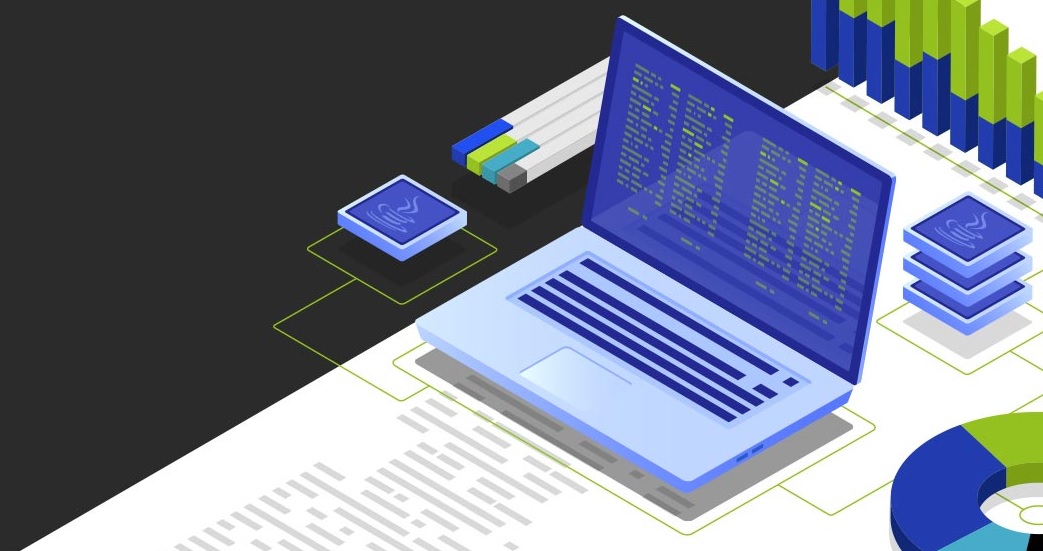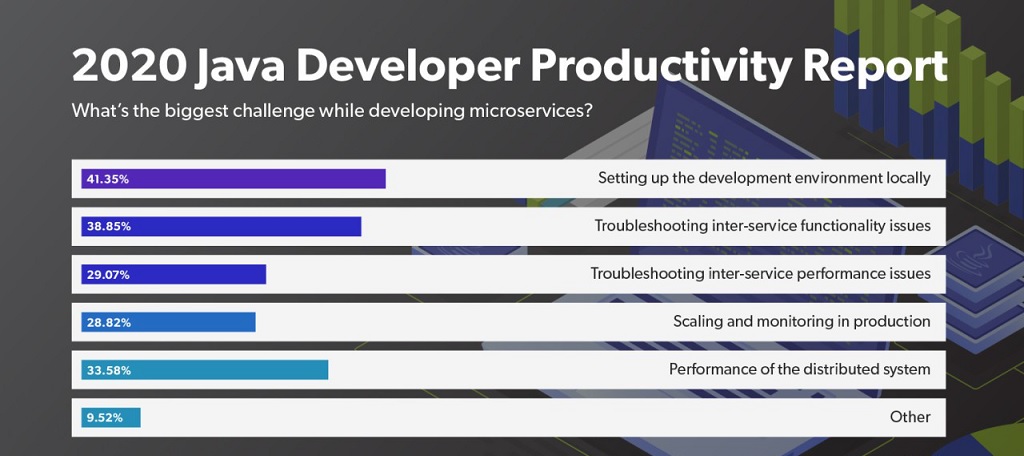Check Point® Software Technologies Ltd.(link is external) announced that it has ranked as a Leader and the only Outperformer for its Check Point Quantum(link is external) Security Solutions in GigaOm’s latest Radar for Enterprise Firewall report(link is external).
The 2020 Java Developer Productivity Report, carried out by Perforce Software, received detailed responses from nearly 400 Java development professionals (with 74% identifying themselves as developers) worldwide. If there was one message that stood out loud and clear it was this: microservices are growing fast, but bring considerable new challenges for developers.

Microservices Adoption
The survey found over 50% of respondents already using microservices, with 28% still working in the monolith environment. 10% reported working in SOA-based architectures, with the remainder spread across desktop, mobile, and serverless application architectures.
Nearly two-thirds of respondents reported working in, or in the process of transitioning to microservices, with a further 21% considering microservices adoption. That means a combined 85% of those surveyed are working with, or considering, microservices for their current project.
Challenges With Microservices
Microservices adoption may have outpaced expectations, but this architectural sea-change carries new challenges for application performance.
Performance issues were the biggest challenge cited by survey respondents, with 29% experiencing problems trouble-shooting inter-service performance, and 33% experiencing performance issues in the overall distributed system. The top performance issue reported by 55% of respondents was slow application response time, followed by memory leaks at 28% and excessive open connections at 24%.
The next biggest issue reported was setting up the local development environment, at 41%, due to this being an intricate, difficult and time-intensive process. This was closely followed by trouble-shooting of inter-service functionality (38.85%).
One prominent concern for developers was their visibility into how their microservices work together as a system. Developers rated their satisfaction with code visibility at only six out of ten.

New Architecture, New and Old Problems
Beyond microservices, at 70%, developers are being asked to have far greater responsibility for application performance. Over half reported non-functional performance goals, which, in practice, means they are carrying out more application performance tests, but often without full insight into how their code is impacting the rest of the application.
This may be a contributing factor to why the survey also found that over 78% of teams had issues that reached production stage in the previous 12 months, though only 17% said that had happened regularly. The good news is the 21% who did not experience issues escaping into production.
Redeploys are another pain point for developers. With the average Java developer reportedly deploying code ten times per day, lengthy redeploys can cause significant roadblocks during development. In fact, almost half of all the survey respondents reported over four minutes per redeploy. (This is despite the widespread adoption of microservices, which were expected to decrease redeploy times.) A further third experience redeploy times of between two and three minutes, with only 20% fortunate enough to experience just one minute per redeploy.
Microservices Technologies
With an average satisfaction rating of six out of ten, most developers were above satisfied with available microservices troubleshooting technologies. 72% of developers reported ratings of satisfied and above, with the remaining 28% less than satisfied with available troubleshooting options.
The popularity of microservices-ready (or requisite) technologies like Docker, Spring Boot and IntelliJ IDEA showed the impact of microservices on the Java development technology landscape. Spring Boot claimed the title for most popular runtime platform at over 80% use, while IntelliJ IDEA led IDE usage at over 81%. Docker, now synonymous with microservices, led virtualization tools usage at over 70%. Kubernetes (often used alongside Docker) represented 35% usage, while VMware and Vagrant followed with 17% and 4% usage, respectively.
Looking Forward
While tools and technologies quickly evolve to supply the means of widespread innovation, developers still face many of the same issues.
Will new innovations solve these perennial issues? Perhaps the focus for the next decade needs to be more on how to empower developers to automate, remove, and streamline tasks for these increasingly complex applications.
Industry News
Postman announced new releases designed to help organizations build APIs faster, more securely, and with less friction.
SnapLogic announced AgentCreator 3.0, an evolution in agentic AI technology that eliminates the complexity of enterprise AI adoption.
GitLab announced the general availability of GitLab Duo with Amazon Q.
Perforce Software and Liquibase announced a strategic partnership to enhance secure and compliant database change management for DevOps teams.
Spacelift announced the launch of Saturnhead AI — an enterprise-grade AI assistant that slashes DevOps troubleshooting time by transforming complex infrastructure logs into clear, actionable explanations.
CodeSecure and FOSSA announced a strategic partnership and native product integration that enables organizations to eliminate security blindspots associated with both third party and open source code.
Bauplan, a Python-first serverless data platform that transforms complex infrastructure processes into a few lines of code over data lakes, announced its launch with $7.5 million in seed funding.
Perforce Software announced the launch of the Kafka Service Bundle, a new offering that provides enterprises with managed open source Apache Kafka at a fraction of the cost of traditional managed providers.
LambdaTest announced the launch of the HyperExecute MCP Server, an enhancement to its AI-native test orchestration platform, HyperExecute.
Cloudflare announced Workers VPC and Workers VPC Private Link, new solutions that enable developers to build secure, global cross-cloud applications on Cloudflare Workers.
Nutrient announced a significant expansion of its cloud-based services, as well as a series of updates to its SDK products, aimed at enhancing the developer experience by allowing developers to build, scale, and innovate with less friction.
Check Point® Software Technologies Ltd.(link is external) announced that its Infinity Platform has been named the top-ranked AI-powered cyber security platform in the 2025 Miercom Assessment.
Orca Security announced the Orca Bitbucket App, a cloud-native seamless integration for scanning Bitbucket Repositories.
The Live API for Gemini models is now in Preview, enabling developers to start building and testing more robust, scalable applications with significantly higher rate limits.




